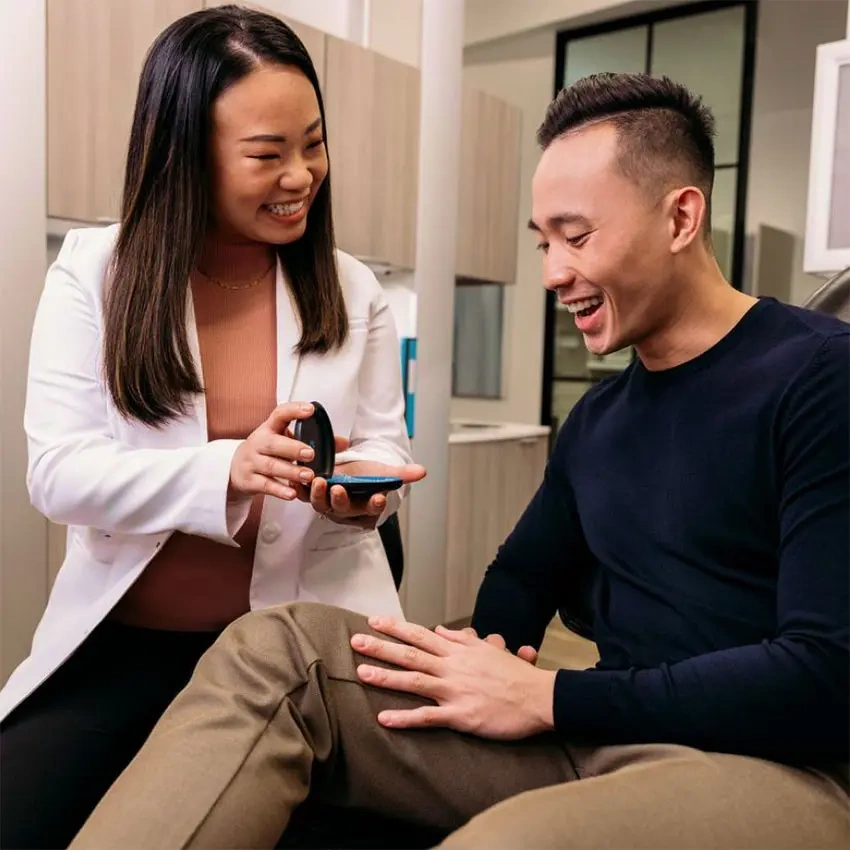
Why Invisalign® clear aligners?
The #1 doctor-recommended clear aligner brand in the world.1
Discover if Invisalign clear aligner treatment is right for you.

Discover if Invisalign clear aligner treatment is right for you.
When it comes to getting the smile you want, it’s never too late to get started with Invisalign treatment.
Compared to traditional wires and brackets, the benefits of Invisalign treatment are clear.
| blank | Invisalign clear aligners | Braces |
|---|---|---|
Personalised plans with doctor-directed care | ||
Personalised plans with doctor-directed care | ||
More comfortable, less painful treatment.7 | ||
More comfortable, less painful treatment.7 | ||
Invisalign treatment requires on average fewer* doctor visits than fixed appliances.8 | ||
Invisalign treatment requires on average fewer* doctor visits than fixed appliances.8 | ||
Emergency visits with Invisalign treatment are almost 80% less frequent than with braces9 | ||
Emergency visits with Invisalign treatment are almost 80% less frequent than with braces9 | ||
Removable for eating, brushing, and flossing | ||
Removable for eating, brushing, and flossing | ||
Invisalign is better oral hygiene, and no drama.10 | ||
Invisalign is better oral hygiene, and no drama.10 | ||
Virtually invisible | ||
Virtually invisible | ||
Progress can be tracked with the My Invisalign™ app | ||
Progress can be tracked with the My Invisalign™ app | ||

Find a doctor near you and schedule a consultation to learn why Invisalign clear aligners are the best choice for your smile.